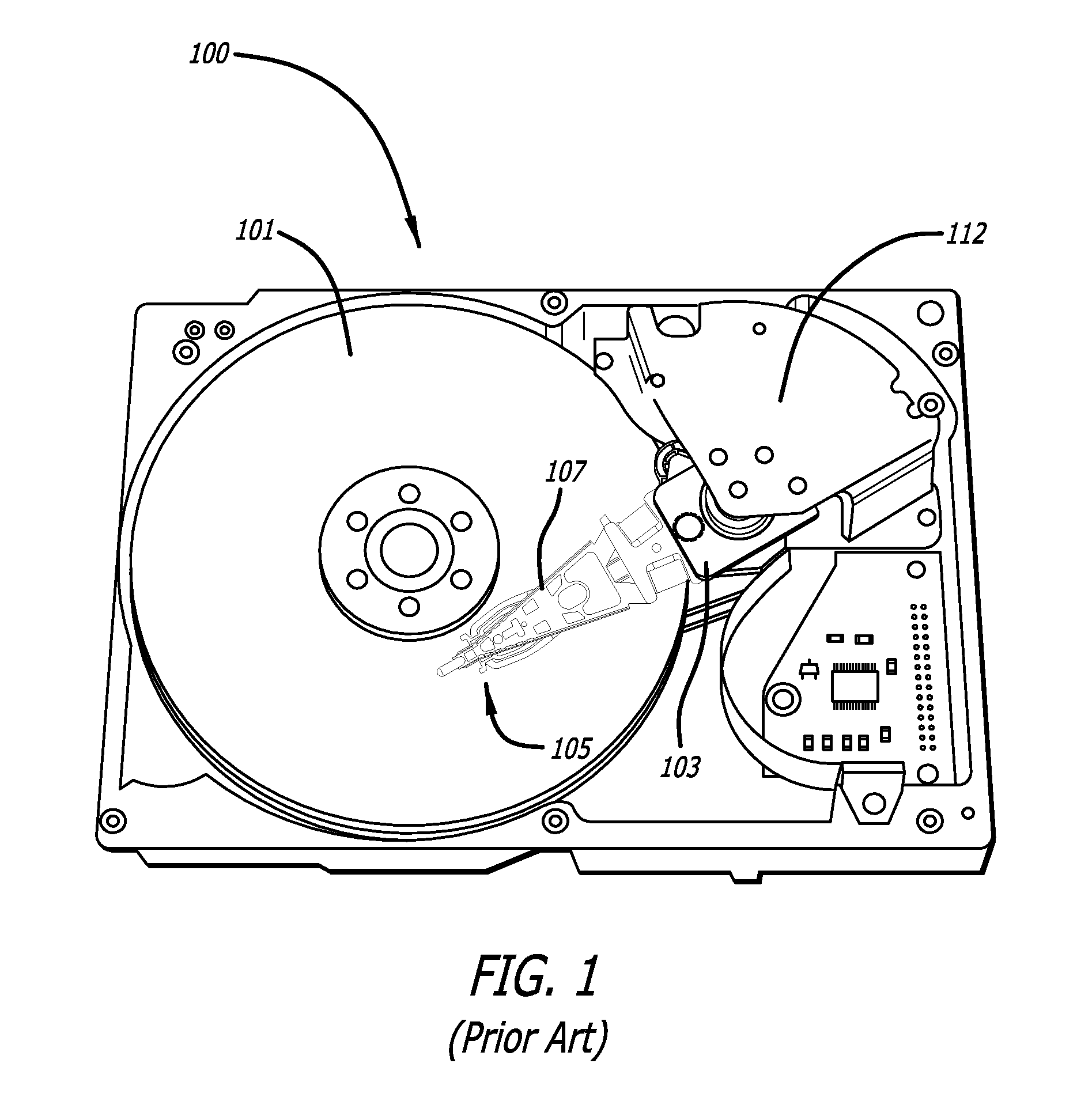Dual stage actuated suspension having adhesive overflow control channels
a technology of control channel and actuation suspension, which is applied in the direction of magnetic recording, data recording, instruments, etc., can solve the problems of affecting the stiffness of gimbals, degrading the static attitude attribution of the head suspension assembly, and degrading the stroke length of the microactuator
- Summary
- Abstract
- Description
- Claims
- Application Information
AI Technical Summary
Benefits of technology
Problems solved by technology
Method used
Image
Examples
second embodiment
[0031]FIG. 8 is a top plan view of a suspension according to the invention. In this embodiment, adhesive overflow channel 43 leads to a reservoir 50 that is wider than the channel and is located closer to the longitudinal axis L-L of the suspension than its associated PZT. Adhesive overflow channel 43 is thus in fluid communication with the reservoir 50. In this embodiment reservoir 50 is a central reservoir that is located on the longitudinal axis L-L of the suspension, and is connected to a first adhesive overflow channel associated with the first PZT and is also connected to a second adhesive overflow channel associated with the second PZT. In this way, excess epoxy from the area of both PZTs will be channeled to central reservoir 50. Because excess epoxy is channeled to a centrally located reservoir, the suspension will be more evenly mass balanced about the longitudinal axis than if the overflow epoxy associated with one of the PZTs all stayed on the lateral side of the suspens...
third embodiment
[0032]FIG. 9 is a top plan view of a suspension according to the invention. In this embodiment adhesive overflow channels 43 are not of uniform width. Instead, the channels widen in the direction in which it is desired to direct the adhesive overflow, in this case, to a reservoir that is centrally located relative to the longitudinal axis of the suspension, and is located laterally between the two microactuators. The widths of the channels may be smoothly tapered (widening) toward the central longitudinal axis. Selectively widening and narrowing the channel allows the overflow adhesive to be more effectively channeled into a desired area, due to the surface tension of the adhesive which tends to draw the adhesive from the narrower portion(s) of the channel into the wider portion(s) of the channel. The channel geometry including the width of the channel and the angle of the channel walls relative to parallel (i.e., the transition slope of the channel) can be adjusted depending on the...
PUM
| Property | Measurement | Unit |
|---|---|---|
| area | aaaaa | aaaaa |
| width | aaaaa | aaaaa |
| conductive | aaaaa | aaaaa |
Abstract
Description
Claims
Application Information
 Login to View More
Login to View More - R&D
- Intellectual Property
- Life Sciences
- Materials
- Tech Scout
- Unparalleled Data Quality
- Higher Quality Content
- 60% Fewer Hallucinations
Browse by: Latest US Patents, China's latest patents, Technical Efficacy Thesaurus, Application Domain, Technology Topic, Popular Technical Reports.
© 2025 PatSnap. All rights reserved.Legal|Privacy policy|Modern Slavery Act Transparency Statement|Sitemap|About US| Contact US: help@patsnap.com



